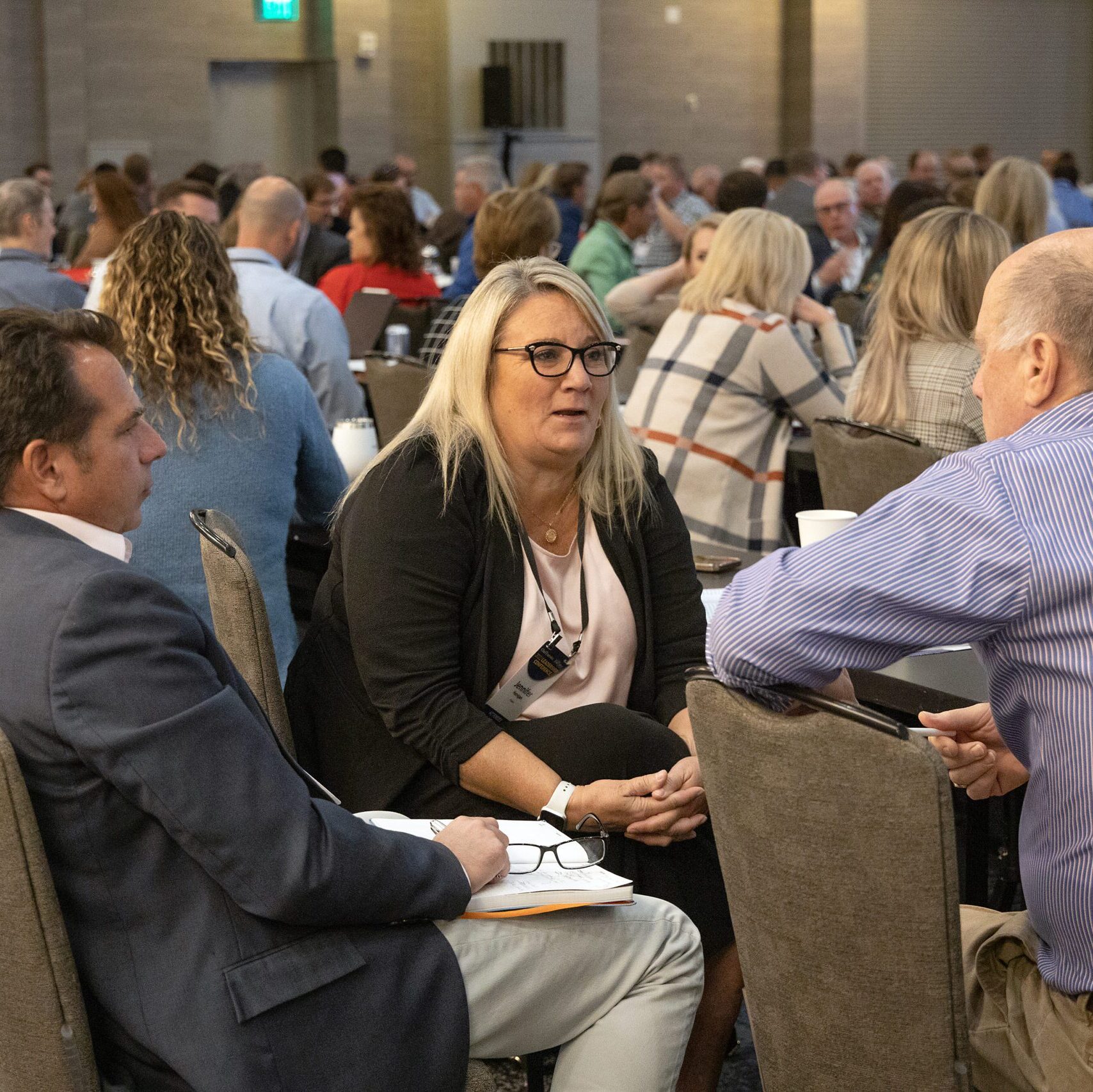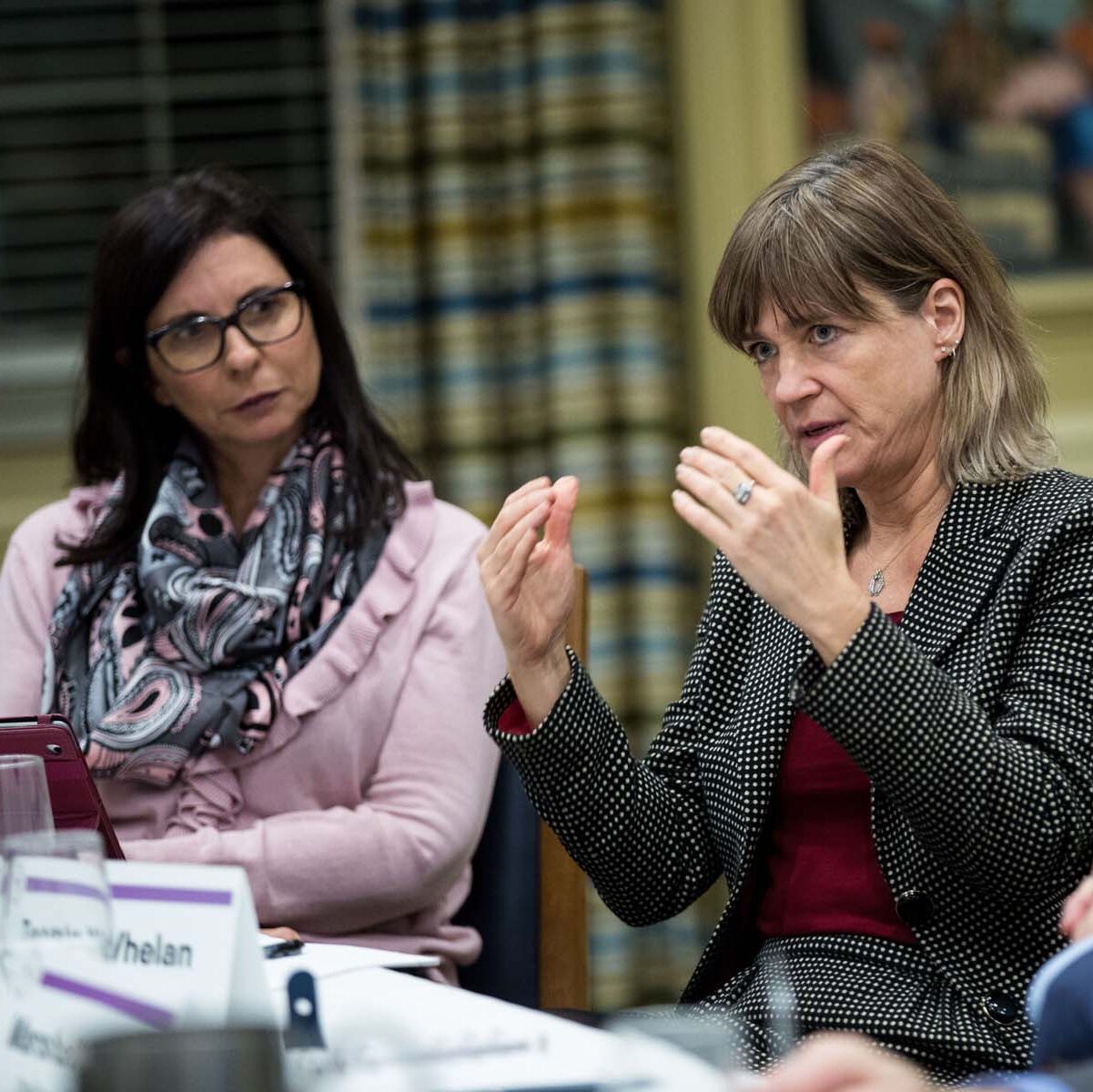
Q: Considering that there are easily 4.7 million manufacturing jobs going unfilled, what steps should companies take to deal with the skills gap?
Create your own supply chains. We have these sites you talk about. A third of them are in the U.S., some of them [are] very large locations. We hub and speak to the community colleges. We work with them on curricula changing, if necessary, to suit the requirement for the modern worker. I use community colleges because that’s where most of the deficit is, in the trades. It’s in the highly skilled operator of complex chemistry. There’s such a shortage of skilled people, especially in the U.S. Gulf Coast for example, that companies are poaching each other.
Talk about wage inflation—go to the U.S. Gulf Coast, Houston and Louisiana. So we do our own training. At the President’s Advanced Manufacturing Partnership (AMP), which I co-chair, this was one of the three topics that received attention at the national level. Big companies are involved with AMP, but we will help small companies get into the mix. We’re going to hub-and-spoke this across the country to put in place national training centers where small companies can participate. Through this (concept) we can convince high school kids, and even middle school kids—that the trades are noble professions. Not everyone should be a double Ph.D. in economics. In fact, there’s not much demand for that, except maybe here at the New York Stock Exchange.
Q: In 2013, Booz and Company, now Strategy&, conducted a study of R&D spending and found no discernible link between the amount of spending and financial performance of the spender. How do you measure outcomes against your R&D? And what advice would you give to CEOs for doing a better job at managing the relationship between R&D and outcomes?
It seems like you’re spending a lot of time inside our boardroom, J.P., because it is an incredibly difficult thing to achieve. I personally have spent a lot of time with some of the best innovators in the country and in the world. What I learned is that no one has the definitive answer. The common denominator, of course, is always the people quality. Google provides open areas for
rollerblading and cafeterias with free food. At Dow, we’ve replenished our facilities around the world, creating similar environments to encourage interaction and spontaneity.
In our industry, we’ve got to re-discover creativity. Call it serendipitous research if you like. This is why we find partnerships very useful. We made a big decision five years ago to cull down the number of universities we work with in terms of research partnerships. We found we were trying to be everything to everyone and it was not satisfactory.
We culled it down to 15 in this country but went deep with all of them. By deep, I mean a quarter of $1 billion for five years. We also helped them rebuild their research engine because many of their chemical-engineering facilities are not very good. Out of this change, we generated a whole new, lightweight materials platform.
We’ve introduced smart coatings. These are coatings that can literally absorb emissions in a room like this. For example, if the paint used on these walls were “smart” paint, it could absorb harmful emissions in the room so you wouldn’t have to breathe it. The next generation of smart coatings will reduce viruses transmitted in the air. Imagine this [technology] applied in hospitals of the future.
These research collaborations are generating patents through the roof, but that’s not how we measure it. It’s the percent of margin that comes from new product. This is an investment headwind very few companies can bear. We spend $1.8 billion a year, $200 million of that in serendipitous or creative areas. Then, we grab business ownership. Once it gets through that first part of the pipeline, individual businesses have to sponsor it.
So our business operates like a hub of startups. They have to make the case to us why that research is of value to them, but they don’t have to pay for it.[/vc_column_text][/vc_column][/vc_row]
Chief Executive Group exists to improve the performance of U.S. CEOs, senior executives and public-company directors, helping you grow your companies, build your communities and strengthen society. Learn more at chiefexecutivegroup.com.
0

1:00 - 5:00 pm
Over 70% of Executives Surveyed Agree: Many Strategic Planning Efforts Lack Systematic Approach Tips for Enhancing Your Strategic Planning Process
Executives expressed frustration with their current strategic planning process. Issues include:
Steve Rutan and Denise Harrison have put together an afternoon workshop that will provide the tools you need to address these concerns. They have worked with hundreds of executives to develop a systematic approach that will enable your team to make better decisions during strategic planning. Steve and Denise will walk you through exercises for prioritizing your lists and steps that will reset and reinvigorate your process. This will be a hands-on workshop that will enable you to think about your business as you use the tools that are being presented. If you are ready for a Strategic Planning tune-up, select this workshop in your registration form. The additional fee of $695 will be added to your total.

2:00 - 5:00 pm
Female leaders face the same issues all leaders do, but they often face additional challenges too. In this peer session, we will facilitate a discussion of best practices and how to overcome common barriers to help women leaders be more effective within and outside their organizations.
Limited space available.

10:30 - 5:00 pm
General’s Retreat at Hermitage Golf Course
Sponsored by UBS
General’s Retreat, built in 1986 with architect Gary Roger Baird, has been voted the “Best Golf Course in Nashville” and is a “must play” when visiting the Nashville, Tennessee area. With the beautiful setting along the Cumberland River, golfers of all capabilities will thoroughly enjoy the golf, scenery and hospitality.
The golf outing fee includes transportation to and from the hotel, greens/cart fees, use of practice facilities, and boxed lunch. The bus will leave the hotel at 10:30 am for a noon shotgun start and return to the hotel after the cocktail reception following the completion of the round.